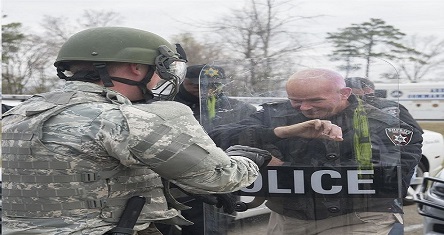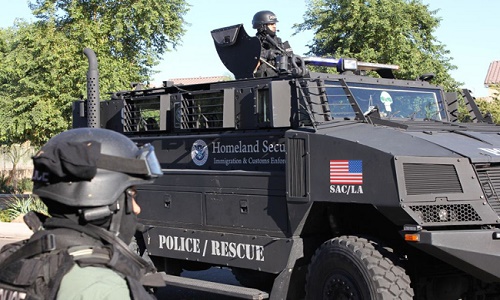Guardsmen Bring Combat Skills to Fighting Western Fires by Jim Garamone

Ross and Air Force Staff Sgt. James Brown spoke to Pentagon reporters yesterday via video link about their experiences. Ross is with Task Force MedEvac and flies missions to rescue people and to drop water on the blazes. Brown is with the 149th Intelligence Squadron and uses data from the MQ-9 Reaperunmanned aerial vehicle to give firefighters near-real-time information on the fires they are confronting.
Huge Fires
The fires are huge and creating their own weather systems. Dropping water on the blazes comes with its own set of problems, Ross said. Smoke, shifting winds, heat and a crowded airspace are all part of the equation as the National Guardsmen help to contain the blazes.
“So [there are] a lot of dangers we have to deal with — other aircraft, there’s a fire that we’re actually trying to put out, there’s people on the ground that we’re trying to protect, structures we’re trying to protect,” Ross said. “So I mean, it has its dangers, we’re just not getting shot at.”
Almost 1,000 California National Guardsmen have been called up to assist in the firefighting effort. They include crews flying C-130 aircraft equipped with the Modular Airborne Fire Fighting system, military police directing traffic and evacuating people, and guardsmen like Brown who use battlefield equipment to help their fellow citizens.
Guardsmen also are fighting fires in Oregon, Washington and Colorado.
The MQ-9 Reaper is usually associated with killing terrorists, but it is an extremely valuable tool for firefighters.
“I am an incident and awareness and assessment coordinator,” Brown said. “I have a focus in collection management, and so I leverage that skill to identify threatened structures, threatened and distressed people and fire lines. We’re able to task the MQ-9 Reaper, as well as the RC-26 and the UH-72, which are both fixed-wing aircraft, and helicopters that have the ability to do remote sensing, and basically record video that our imagery analysts are able to relay back to the incident commanders.”
The incident commanders, whether they’re from the California Department of Forestry and Fire Protection or the U.S. Forest Service, are able to see exactly where their fire lines are at any given time. “So far we’ve been able to fly our aircraft on all of the major fires,” Brown said. “And we are always standing by to help them more.”
Saving Lives

The system has helped save lives. “During the Thomas Fire in San Diego last December, we were able to make a call out where a fire line was within 500 yards of a neighborhood that had not been evacuated,” he said. “We were able to evacuate around 5,000 homes and get those people out of there. And unfortunately, the fire did end up rolling through that neighborhood within a few hours.”
The California Guard is not anticipating calling up any more personnel for the current fires, said Army Maj. Gen. Matthew Beevers, the deputy adjutant general of the California Military Department.
“That obviously could change,” he said. “Fire season in California is just getting underway. We have yet to experience Santa Ana winds in the southern part of the state, and the typical fire behavior generally occurs much later in the summer and into early fall.”
The California Guardsmen have already had a busy year. The personnel are called up for about 30 days.


